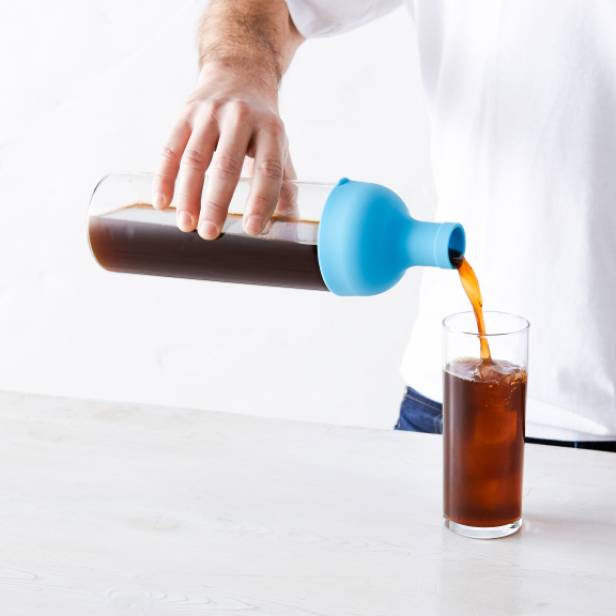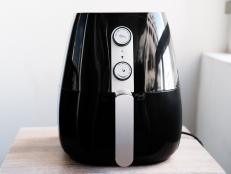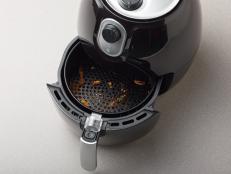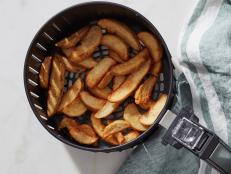How to Make the Best Coffee in Every Kind of Coffee Maker
And how to pick the right coffee brewing method for you.

Abdulrhman Al Shidokhi/Getty Images
It used to be so simple: Buy ground coffee at the supermarket, throw some in a filter and flip on the Mr. Coffee. Not anymore! These days, coffee has been elevated to an art form, with pro and amateur devotees alike who have strong opinions about growing and harvesting methods, brewing and more.
The good news is, whether you're coffee obsessed or just want a great morning cup, there are myriad ways to improve yours. We took a deep dive into different brewing methods to help you get the best cup (or pot) of coffee every time.
Tips That Work for Every Coffee Brewing Method

ktasimarr/Getty
Start with filtered water. "If you use tap water, there are mineral components that can affect the flavor and the total outcome," says Erika Vonie, director of coffee for Trade Coffee, a Coffee Masters champion and and Q Grader (like a coffee sommelier). "Coffee is just ground coffee and water, so both have to be really good for the final outcome to be good." Check out our top-tested water filter pitchers here.
Grind your beans. "Freshly ground coffee is much more aromatic, it’s more lively, and you can get more notes out of it," Vonie says. "If it’s been ground for a while it isn’t going to be bad, but it might be a bit more flat." For true devotees, Vonie recommends a conical burr grinder for grinding the beans, not a blade grinder. A burr grinder will give you a more even grind, and you can control the level of grind, so you get more even grounds in the size you need for your preferred brewing method.
Rinse the filter. "Paper filters often carry a papery taste that can be imparted into the brew itself," Vonie says. To avoid getting a papery note in your brew, rinse paper filters with hot water before brewing.
Mind the heat. You want the water to be between 195 and 205 degrees F, according to the National Coffee Association. Automatic coffee makers are set for this, but if you’re heating the water manually, let it come just to a boil, then let it sit for 30 seconds to a minute to allow the temperature to come down slightly. (The exception: Cold brew, which uses cold or room temperature water.)
Measurements matter. A ratio of 1:17 is the basic one for most brewing methods, Vonie advises. That means for every gram of coffee, use 17 grams of water. If you aren’t weighing your coffee and water (i.e., you’re like most people), 1 to 2 tablespoons of ground coffee for every 6 oz. of water is what the National Coffee Association recommends. Try this ratio and experiment with using more or less to find your preference.
Automatic Drip

No wonder this brewing method is so popular — it’s one of the simplest. And let’s face it: Before you’ve actually had that first cup, you may not be up for a very complicated or delicate procedure.
How To
First, pre-soak your filter if you're using a paper one. Then, grind your beans to medium and place them in the filter. Fill the reservoir with the desired amount of water and turn the pot on to start the brewing process.
Pro Tip
Be sure to keep your coffee maker clean for the best tasting coffee, and to give your machine more longevity. "Coffee creates a lot of oils and sediment. If you just let it sit, it can get really corrosive," Vonie says. She recommends rinsing all components of the maker after each use and washing them with soap and water once a week. Every three months, run a deep clean following these instructions.
Top Picks
Pour Over

This super-trendy brewing method is popular among those who prefer to have maximum control over every step of the brewing process. (It’s also great if you’re the only coffee drinker in the house, and don't always want — or need — a whole pot of coffee.) You can find more pour-over tips and technique in our article How to Make Pour Over Coffee.
How To
Heat water to 200 degrees F. Grind your desired amount of coffee to a medium — it should look like sand. Pre-soak the filter and place it in a pour-over cone. Add your coffee and level it. When your water is ready, drizzle in just enough water to wet all of the grounds. Let it stand for 30 seconds. (This process is called "blooming," which helps give an even extraction of coffee for better flavor. Continue pouring, using a pattern that allows you to hit all of the coffee evenly. "I like doing spirals into the center and then in the other direction," Vonie says. "But the important thing is that you keep it even and consistent and you’re hitting all parts of the brew bed."
Pro Tip
"Have fun, experiment, and keep a notebook," Vonie says. She keeps a notebook with her methodology to record her trials, errors and successes.
Chemex

This elegant carafe has been beloved by coffee aficionados since its invention in 1941. The Chemex is a type of pour over, but employs special double-bonded paper filters, based on laboratory-grade paper, and is designed to filter impurities and bitter elements from the coffee. The result, devotees say, is smooth, bright, less acidic coffee, no matter how strongly you brew it.
How To
Heat water to proper temperature. Grind your beans to a medium-coarse size. Follow manufacturer instructions to properly fold special Chemex filter and insert into cone. Pour hot water through to prime filter and warm the brewer. Pour out water, taking care to keep filter flush against coffee maker. Add coffee to filter. Pour just enough water to wet grounds; wait 30 seconds for bloom. Then continue pouring water over grounds until you reach the amount of coffee you want in the bottom of the carafe. Discard filter and pour coffee.
Pro Tip
"Because it’s a cone shape, all of the coffee falls to the lowest point," Vonie says. She recommends pouring the water directly into the center of the grounds. The water will move to the lowest point and slowly start to come out of the hole you've made. When that happens, you can start to saturate the rest of the coffee.
Top Picks
French Press

Just as pour over gives the coffee maker lots of control over the final result, so does the French press, but in a different way. It’s generally quicker than drip coffee, and usually comes out thicker and heavier than other methods, but with some tweaks, you can learn to press your perfect cup.
How To
Warm pot by filling it with hot water; plunge. Grind coffee to coarse (about the texture of breadcrumbs). Pour hot water out of the press; add coffee. Add hot water, making sure all grinds are saturated. Fill the press halfway. After 1 minute, use a spoon to break the crust of grinds that’s formed on top. Add remaining hot water, to the point where the metal and glass meet. Place plunger on top. Wait 4 minutes. Plunge the press down; pour coffee.
Pro Tip
"If you want a cleaner French press, try to not move it as much as possible," Vonie says. After the coffee has brewed for 4 minutes, break the crust that's formed and remove the slurry of grounds off the top. Instead of plunging all the way to the bottom, leave the plunger at the top of the coffee level to filter the silt that would otherwise make its way into your cup.
Top Picks
Espresso Machine

Sure, it’s easy enough to pop into any coffee shop these days and have a barista work up your favorite espresso drink. But what a luxury to be able to do it for yourself in pajamas on a Sunday morning. That said, don't expect barista level drinks on your first go-round. "Espresso is complicated, it’s very fickle," Vonie warns. "Just because you have the machine, you still have to learn it," which can take some trial and error.
How To
Grind the beans very finely, so they resemble table salt (any finer than that, and the grinds will be more like a powder that prevents water from seeping through), settling the grinds evenly within the filter puck. Level it off with your finger to even it further. Tamp the grinds down into the puck firmly and evenly. Lock puck into machine’s grip head. Follow manufacturer instructions to brew.
Pro Tip
"A common misconception is that the only coffee you can put in an espresso machine has to be espresso roasted," Vonie says. "You can grind any coffee you like and use it in an espresso machine to create a shot of espresso."
Top Picks
Cold Brew

It’s not the same as iced coffee, which is coffee brewed in a traditional way and poured over ice. Cold brew is its own thing; it’s a simple brewing method that can yield you less acidic and more caffeinated coffee. You can also drink it hot! Make a concentrate (directions below) and dilute it to the strength that you want it to be by adding hot water or adding water and warming it gradually on the stove.
How To
For cold brew, use a 4:1 ratio of water to coffee. Grind the beans coarsely. Add them to any vessel (a mason jar, a pitcher, etc.), and cover with the correct amount of filtered water. Stir to ensure that all the grinds are saturated. Cover the vessel and refrigerate for 12 hours. (At that point, you can taste a spoonful and see if it’s at the level of flavor you like; if not, re-cover and continue to refrigerate for more time, Vonie suggests.) Vonie notes that you can brew at room temperature; it will work faster than brewing it in the refrigerator, so factor that into your plans. Filter the coffee and serve, or place in a clean vessel, cover and refrigerate to serve later.
Pro Tip
Brewers at Kicking Horse Coffee in Canada recommend double filtering the grinds during the brewing process for an even cleaner-tasting, brighter brew. Before adding the coffee to your vessel, tie the grinds in a paper filter, put that into a nut milk bag (the type you would use to strain homemade almond milk), place that in the vessel, add the water, cover and brew as above.
Top Picks
Vacuum

Also known as a siphon, this type of brewer, which employs what’s known as a full-immersion process, is fairly complex and probably not ideal for a cup of coffee on a busy weekday morning. If you love to geek out over different brewing methods, you may enjoy exploring it.
How To
A vacuum brewer has top and bottom containers, connected by a siphon tube. You put water in the bottom container, medium-ground coffee in the top container, and a filter in between. There's a heat source under the bottom container. The heat makes the water form vapor, and the steam causes the water to rise into the upper container with the grounds. The water never boils because of the constant heat source, which keeps all the flavor in the coffee. Plus, the coffee sits in the water the whole time (this is the "immersion"), which also helps get the best extraction. Gravity causes the water mixed with the grounds to be pulled back down, through the filter, into the lower chamber, and that’s your coffee.
Pro Tip
Use a metal filter, as opposed to cloth. "In my experience, the cloth filter can disrupt the seal, and the heat exchange can be messed up. Metal filters seem to fit better, which can help the even flow of heat," says Vonie.
Related Links:















































































